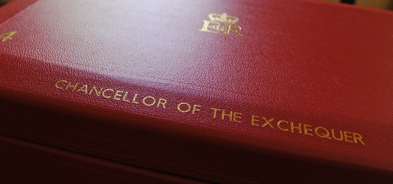Bank of England cuts interest rates to 4.25%: what does it mean for your personal finances?
At its meeting on 7 May 2025, the Monetary Policy Committee (MPC) voted by a majority of 5–4 to reduce Bank Rate by 0.25 percentage points, to 4.25%. Bestinvest personal finance analyst, Alice Haine, breaks down what it means for your personal finances.
The value of investments can fall as well as rise and that you may not get back the amount you originally invested.
Nothing in these briefings is intended to constitute advice or a recommendation and you should not take any investment decision based on their content.
Any opinions expressed may change or have already changed.
Written by Alice Haine
Published on 09 May 20257 minute read

What happened at the latest Bank of England meeting on 7 May 2025?
Households hoping for a fourth bank rate cut had their wishes met as the Bank of England reduced the benchmark interest rate to 4.25%, in line with expectations, taking the base rate to its lowest point since March 2023.
The rate-setting Monetary Policy Committee’s split vote (5-4) in favour of a cut – the second this year - means some households will enjoy further respite from the punishing rise in borrowing costs seen between December 2021 and August 2023. Two members were even more dovish, voting for a 50-basis point cut to 4%, while two preferred to maintain the bank rate at 4.5%.
Overview - who will be impacted by the rate cut and how?
The latest interest rate decision will certainly deliver some spring cheer to those households still trying to get budgets back on track following the post-pandemic cost-of-living and borrowing crises that saw personal finances squeezed to the max.
First-time buyers, those with large mortgages that need to be refinanced, and borrowers with heavy debts, are likely to be the most relieved by the potential for easing borrowing costs. Savers, meanwhile, might feel disappointment at the prospect of a lower return on their savings pots.
With inflation now closer to the BoE’s target of 2%, the worst of the cost-of-living squeeze appears to be in the rear-view mirror but living costs remain high and consumers can’t breathe a sigh of relief just yet. Inflation is expected to tick back up again in the coming months - up to 3.5% in the third quarter - a result of the US President’s tariff war and households being hit by a fresh barrage of bill hikes in ‘Awful April’ when energy, water, council tax and other household costs jumped once again.
Add in the creeping tax burden as personal allowances remain firmly in the deep freeze until at least 2028, pushing people into paying higher rates of tax as their wages increase, and some households may feel as though their personal finances are running just to stand still.
Easing inflation in March and the prospect of slowing growth, as US President Donald Trump’s trade war threatens the health of the global economy - even with a US-UK trade deal confirmed on 8 May - offered the impetus the central bank needed to push ahead with a fourth rate cut. With further cuts potentially in the pipeline this year, borrowing costs may ease once again. If a fifth rate cut materialises as soon as June, that would be the first back-to-back reductions since 2009, bar the pandemic.
Consumers should tread carefully from here and not consider the improving borrowing conditions as a green light to spend big, run up fresh credit or take on an oversized mortgage. Uncertainty about the wider economic outlook and the future of interest rates still rules, so running down emergency funds or borrowing to the max should be avoided to ensure households still have cash reserves to tap into over the long term.
What does the rate cut mean for mortgage holders?
For homeowners, a quarter-point rate cut offers hope that the mortgage misery of recent years will continue to ease. Borrowers on tracker mortgages pegged to the base rate will see a more-or-less immediate reduction in their monthly repayment while those locked into expensive fixed-rate deals with multiple months or years left to run must remain patient as their costs will stay the same.
Borrowers rolling off cheap five and 10-year fixed-rate deals taken out before the BoE began hiking rates are still likely to face an increase in repayments when they eventually refinance, though the rise in costs may now not be as heavy as anticipated.
First-time buyers looking to escape high rents will be particularly buoyed by the latest interest rate news as it bolsters their chances of getting a foot on that elusive property ladder. High prices, the painful process of raising a deposit, and the challenge of meeting lenders’ affordability criteria have been barriers to home ownership for many in recent years. While new buyers must now contend with higher stamp duty charges, after the property tax thresholds reverted to their previous lower levels at the start of April, a fourth rate cut coupled with some lenders loosening their affordability criteria offers hope from here.
The majority of borrowers are signed up to fixed-rate mortgages, with around 1.6 million mortgages set to end this year*. For anyone nearing the end of their product’s fixed-rate term now, a rate cut presents them with a tricky decision: should they secure another fixed-rate deal or take a punt on further interest rate cuts, which could mean a tracker might work out best over the longer term?
Seeking advice from an independent mortgage broker - who can scour the market for the right solution for an individual’s circumstances and get a deal in place - is key to avoid reverting to a lender’s ultra-expensive standard variable rate. Remember, with interest rates potentially set to fall further this year, once a new mortgage product is secured, borrowers can check for a better deal right up until the term of their new product starts - so keep in touch with your broker.
What does the cut mean for savings?
For savers, a rate cut is less of a boon. Savers have enjoyed bumper pre-tax returns in recent years, but that picture has been slowly changing since the summer of 2023 when savings rates hit their peak. Savings rates are now firmly in retreat mode and with more bank rate reductions expected, those that want to preserve their return must act fast by securing the best deal possible while interest rates remain on the higher side. This is imperative for anyone with money idling in a current account or an old savings account offering a dismal return, which is being slowly eroded by inflation.
Savers should stay mindful of their Personal Savings Allowance (PSA), which has remained unchanged since its launch in 2016, creating a headache for some savers during the era of higher savings rates because more people found themselves paying tax on the interest they earn. Easing interest rates won’t erase that problem entirely. Many savers with the top deals can still make a decent return on their cash savings, putting them at risk of breaching their PSA.
While many savers are still making a real return, once inflation is factored in, it is the post-tax ‘net return’ on that cash that they really need to pay attention to. Increasing numbers of taxpayers are being dragged into higher rates of tax as their incomes increase, a result of most personal tax thresholds remaining on hold until at least 2028, so for taxpayers in the higher bands in particular, real returns net of tax may only be marginally positive even on the most competitive accounts.
What are the options for savers?
This is where a tax-efficient savings strategy comes into its own, such as taking advantage of your tax-free ISA allowance and topping up pensions. ISAs allow savers to stash up to £20,000 this tax year and to grow their wealth and withdraw investments when they want without fear of a tax bill at the end. Remember, this is a ‘use it or lose it’ allowance because you cannot carry it into the next tax year. Plus, with the Government now mulling ‘ISA reforms’ - particularly to the Cash ISA allowance though the Stocks & Shares ISA could also be line for changes, as it looks to achieve the right balance ‘between cash and equities’ - savers might want to explore maximising existing rules while they are still in place.
You should remember that Stocks & Shares ISAs and pensions are forms of investing and investments, and the income from them, can go down as well as up and you may get back less than you originally invested.
Looking to make use of this year’s ISA allowance?
Topping up a pension can also be a good move for savers wanting to invest for the long term. This not only boosts their future retirement income but also slashes their income tax bill in the short term because any contributions attract tax relief at their marginal rate of tax. Basic rate taxpayers have 20% in tax relief added to their pot with each personal contribution while those on the higher 40% and 45% tax rates can respectively claim a further 20% and 25% off their tax bill for the year, something that can be particularly beneficial for those looking to dip under some of the nasty cliff edges that can hit workers as their income increases and edges into higher tax bands. Prevailing tax rates and reliefs depend on your individual circumstances and are subject to change.
Learn more about the Bestinvest Self-invested Personal Pension (SIPP)
The Best SIPP is designed for people looking to invest at least £10,000 over a short time frame.
*According to UK Finance
Speak to a Coach about the impact of the rate change and your broader financial goals
It's easy to book a session with a Coach. If you're an existing Bestinvest client simply log in online and head to the coaching section of your account.
If you're not a Bestinvest client, click the link below.
Get insights and events via email
Receive the latest updates straight to your inbox.
You may also like…






